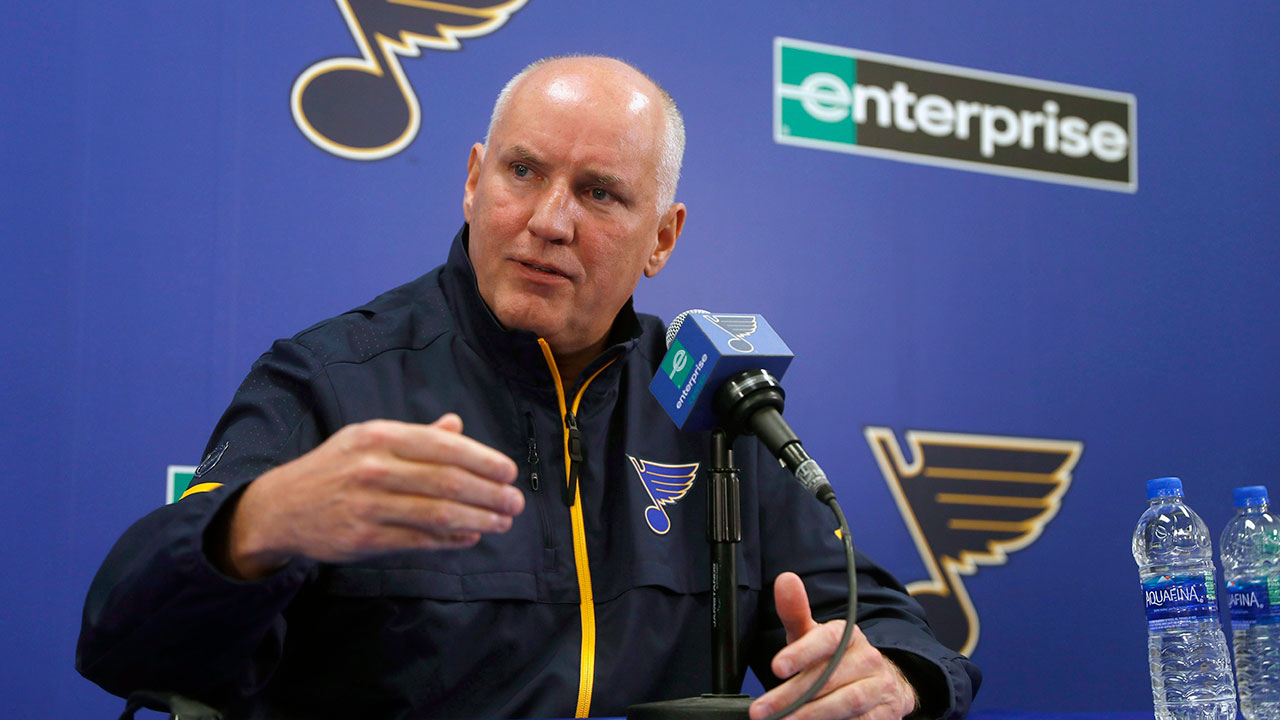The game is about to change again.
When the NHL's salary cap was introduced for the 2005-06 season, the upper limit was set at $39 million. Astounding, when you look where we're at now.
Every year from then, until 2019-20, the cap rose as revenues did. When the COVID-19 pandemic hit in March of 2020, the NHL's upper limit sat at $81.5 million and the ensuing economic slowdown froze the cap for the first time.
This changed the complexion of how we compared and projected contracts around the league. Where before we had to consider the impact of inflation on the market, the past three years have stalled that picture. Overall, raises were harder to come by and the top of the market remained largely unchanged. When Nathan MacKinnon, one of the game's top players, signed his eight-year extension two weeks ago, he became the league's highest paid player (by AAV) by only $100,000. That could wind up being a heck of a deal for the Avalanche in the long run again.
Why? In 2022-23, the cap finally went up again, but only by $1 million. That's not enough to radically change the market for superstar contracts, but what's coming next just might be.
As reported last week, the league has given teams guidance on where the salary cap could be heading over the next three years. This gives teams the information they need to plan, and it gives us fodder to project some future star deals.
But first, here are those projections. Please understand these are possibilities and an educated guess on where we could be going, not a guarantee of where things will be.
So naturally, that brings us to Auston Matthews. And, no, not just because everything needs to be about the Toronto Maple Leafs. He represents the next superstar who has a strong case to become the NHL's highest-paid player by AAV when his contract expires. Matthews has two years left on his deal with the Maple Leafs, so he can't actually sign an extension until at least July 1 of next summer. But when that deal arrives, it is likely to represent the beginning of a significant market shift into the NHL's post-COVID era.
When projecting these kinds of contracts against a rising cap, it is important to consider the cap-hit percentage of the contract when it was signed. So, when we look at Matthews, there are two recent deals that are immediately important:
Connor McDavid: 16.67 per cent of salary cap at time of signing
The Oilers' star reset the market when he signed his eight-year extension in July of 2017. The $12.5 million AAV he received set a new high bar and accounted for 16.67 per cent of the cap in 2017. The upper limit at that time was $75 million.
However, when McDavid signed, he still had one year left on his ELC, so his current contract didn't begin until the start of the 2018-19 season. That year, the upper limit was $79.5 million, which means that when McDavid's contract actually kicked in, it accounted for 15.7 per cent of the cap. Today, that percentage is also the highest in the league.
Nathan MacKinnon: 15.27 per cent of salary cap at time of signing
MacKinnon took over McDavid's perch as the player with the league's highest AAV when he signed for the $12.6 million cap hit. Against this year's $82.5 million upper limit, that accounts for 15.27 per cent of the cap. So while he became the highest-paid player, his impact on Colorado's cap is actually smaller than McDavid's was on Edmonton's cap when he signed.
And, like McDavid, MacKinnon still has one year left on his old contract, so the new one won't actually start until the 2023-24 season. If the above projections are correct and the cap rises by another $1 million for next season, MacKinnon's deal would account for 15.08 per cent of the cap when it actually starts.
So this is where we begin with Matthews, and there are a few different ways his next contract could go...
(With lots of help from the great puckpedia.com)
SETTING A NEW HIGH BAR FOR AAV
Before Matthews' current contract was signed in 2019, we did a similar exercise to project what his number might be, and made the case at that point for why he could become the league's highest-paid player by AAV. But Matthews didn't sign for the maximum term (eight years) like so many others were doing at the time. That probably saved the Maple Leafs some dollars as it only bought them one of Matthews' UFA years.
So this time, we must again consider the possibility that Matthews signs another shorter-term deal instead of going the full eight years. If he were to sign another five-year pact with Toronto, it would expire after his 31-year-old season, and potentially set him up for another big score in 2029, when the cap should be even higher. This might end up being the best way for him to truly maximize his career earnings, with the added risk of injury of course.
A shorter deal would, perhaps, again save the Maple Leafs maximum cap expenditure, but the difference this time is that Matthews would have his UFA status as leverage. Regardless of what happens, Matthews still figures to end up with the highest AAV in the league whenever he does sign a new contract.
If Matthews were to sign next July for the same 15.27 per cent of the cap MacKinnon just did — and we impose that on the projected $83.5 million upper limit at the time of signing — his AAV would just barely surpass MacKinnon's $12.6 million, regardless of contract length.
This is the reasonable base line. This is the starting point in any discussion about what Matthews' next contract could look like. It won't be lower than this.
GOING OVER McDAVID'S CURRENT LEAGUE-HIGH CAP PERCENTAGE
Maybe you feel he's earned this already, but if Matthews were to score 60 goals and win the Hart Trophy again this season, you could make the case that he not only deserves the highest AAV in the league, but also the highest cap percentage.
That honour currently belongs to McDavid, whose contract accounted for 16.67 per cent of Edmonton's cap at the time it was signed.
So if, next summer, Matthews signs for 16.67 per cent of next year's $83.5 million salary cap, a short-term, five-year deal would look like this:
Something like this is within reason for Matthews as well and, perhaps, one of the more likelier outcomes. However, when you consider that the salary cap is projecting to rise another roughly $4-4.5 million just one year later, and then possibly as much as another $4 million the year after that, Matthews may want to squeeze even more out of his next deal.
WHAT IF MATTHEWS CHASED EARNING 20 PER CENT OF THE CAP?
Here's where it gets really fun.
There is a maximum that players are allowed to sign for in the NHL, and it's 20 per cent of whatever the salary cap is at the time. No one has played that game since Brad Richards signed a five-year deal with the Tampa Bay Lightning in May of 2006 — a $7.8 million AAV against a $39 million cap. When the deal officially kicked in for the 2006-07 season, the cap had risen to $44 million, which meant Richards' hit really took up 17.7 per cent of the cap when it became active.
The next-highest cap percentage ever signed was Alex Ovechkin's 18.96 on a 13-year pact he inked with Washington in 2008 — and term that is no longer allowed. That contract expired after the 2020-21 season and had an AAV of $9.538 million.
What if Matthews is the player to try and reset the conversation by that measure, instead of just AAV?
If Matthews were to sign for 18.96 per cent of next year's projected $83.5 million cap (again, one year before it would actually kick in), then his AAV would come in at $15.8 million — $3.2 million more than the current high for an AAV.
That AAV would stay the same regardless of contract term, so for this table, we'll impose an eight-year extension to get an idea of what the maximum earning could be for Matthews with this scenario.
But, again, that $83.5 million upper limit is for now projected to rise $8.5 million by the time Matthews' extension is two years old, so there's a case for him to push being the first player since Richards to make the 20 per cent cap.
If he did that, Matthews' maximum contract next summer would look like this...
And since Matthews was content signing for a shorter, five-year term on his last deal, we have to consider the possibility he does so again this time. Here's what a shorter term deal would look like for 20 per cent of next year's cap.
Interestingly, if this is how it shakes out, the $16.7 million AAV for Matthews (regardless of the contract length) would account for 18.97 per cent of Toronto's cap when Year 1 of the deal kicks in, if the upper limit does wind up being $88 million. By that measure, Matthews would still come in just ahead of Ovechkin's 18.96 cap hit percentage, and set a new record for cap hit percentage in Year 1 of a contract.
WHAT ABOUT 20 PER CENT OF AN $88 MILLION CAP?
So you may be reading this and wonder why Matthews wouldn't just wait for the $88-million cap to kick in, and then sign for the maximum cap percentage (or something close to it) on that number.
In this scenario, Matthews would have to wait until he actually becomes a UFA on July 1, 2024 to sign a deal that's worth 20 per cent of a projected $88-million cap in 2024-25. So, even if he were to sign an extension on June 30, 2024, his maximum would be limited by the $83.5 million upper limit.
If Matthews wanted a maximum eight-year term, he wouldn't be able to get it this way. As soon as he becomes a UFA, he is no longer eligible to sign for eight years — not even with the Maple Leafs. So, with current projections, the most total money he would be able to sign for as a UFA on July 1, 2024 is actually $10.4 million less than what he could get from Toronto on a maximum offer one year earlier, against a smaller cap:
But before Leafs fans breathe a sigh of relief, there is still one scenario where it would make sense for Matthews to wait on signing his next deal until he does become a UFA. We're not suggesting this is the most likely outcome — it's just one that exists.
What if, as before, Matthews is completely content with a shorter, five-year deal? And what if he wanted to maximize his earnings on that contract?
In that scenario, Matthews would stand to earn $4.5 million more on a five-year deal by waiting for the open market, than if he signed for the maximum cap hit at the same length with Toronto next summer.
Happy Tuesday, Leafs fans.
Matthews is the flash point for this discussion today, but he will just be the first one in this new cap era about to hit the NHL. One year after Matthews' next contract begins, Connor McDavid will be eligible to re-sign an extension with the Oilers at a time when the upper limit is currently ballparked to be somewhere around $92 million.
And you can imagine where that number could go.







